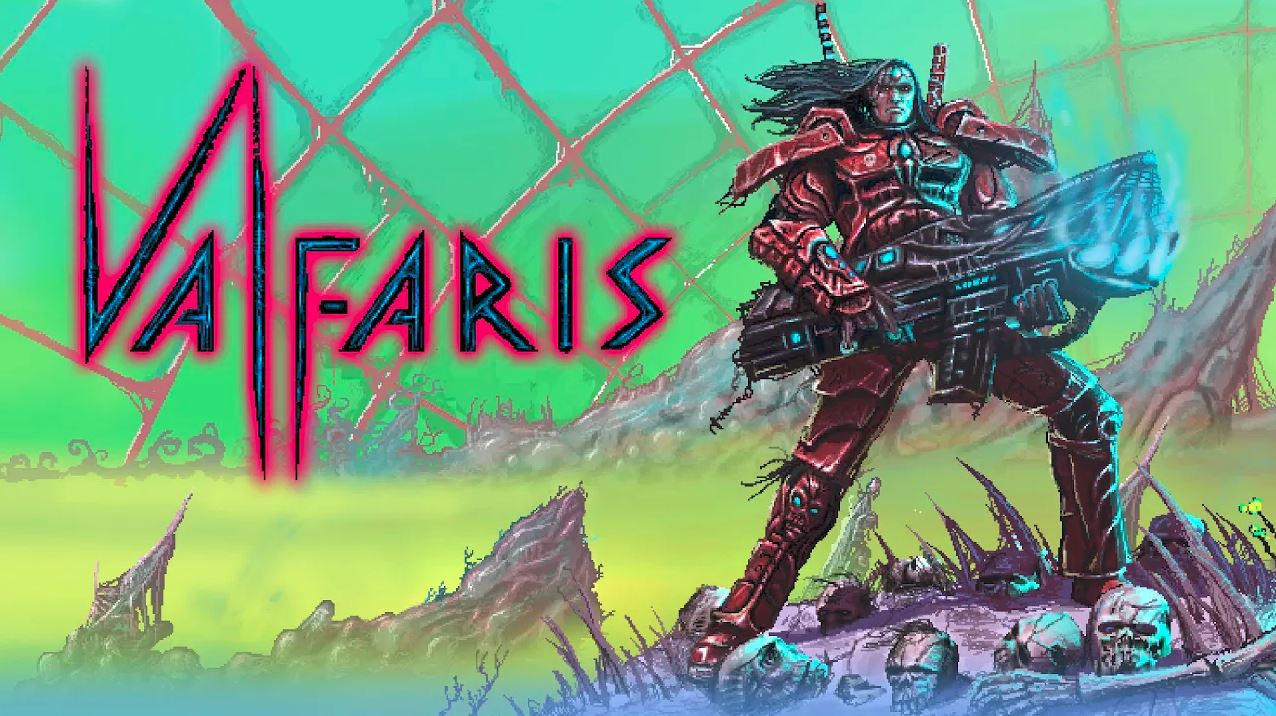
The developers of Valfaris had a rocky start. Back in 2016, when the team was still called Wolf Brew Games, they created a heavy metal-infused side-scrolling action-platformer called Slain! The game was almost universally panned by critics and gamers alike for a whole multitude of reasons. Undeterred, the developers took the feedback to heart and relaunched it as Slain! Back from Hell later that year. The updated version received significantly more positive critical reception, and its often cited as an example of a game with a poor launch being significantly improved by some devoted developers. With Valfaris its clear that the team, now called Steel Mantis, has learned a lot from their previous fumbles.
Valfaris
Publisher: Big Sugar
Developer: Steel Mantis
Platforms: Windows PC (Reviewed), PS4, Switch, Xbox One
Release Date: October 10th, 2019
Players: 1
Price: $24.99
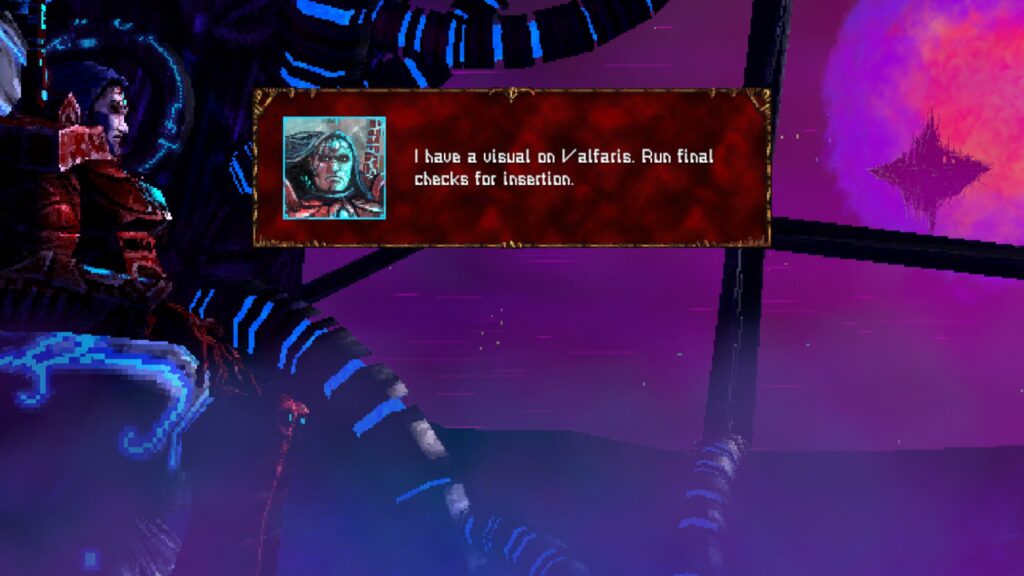
Valfaris has a simple and straightforward story. In a grim and grisly universe not unlike 40k, the power armored warrior Therion has returned to the once grandiose space fortress Valfaris. Ruled by your father, King Vroll, the fortress has fallen into disrepair, ruin, and misery as its leader slips deeper and deeper into madness.
As Therion, its your job to clean up the fortress and return it to its former glory, preferably by brutally massacring everything in your path with an arsenal of exotic firearms and plasma-infused melee weapons.
What little story the game has is told to you through interactions with your faithful companion, a busty hologram AI that makes the newer iterations of Cortana look modest, and exchanging quips with the decrepit bosses and enforcers employed by your insane and power hungry father.
In true 80’s-inspired heavy metal fashion, a lot of this interaction involves gloriously cheesy one-liners and ridiculously over-the-top mission objectives that involve saturating yourself in the blood of your enemies to fool the organic doors of alien hives.
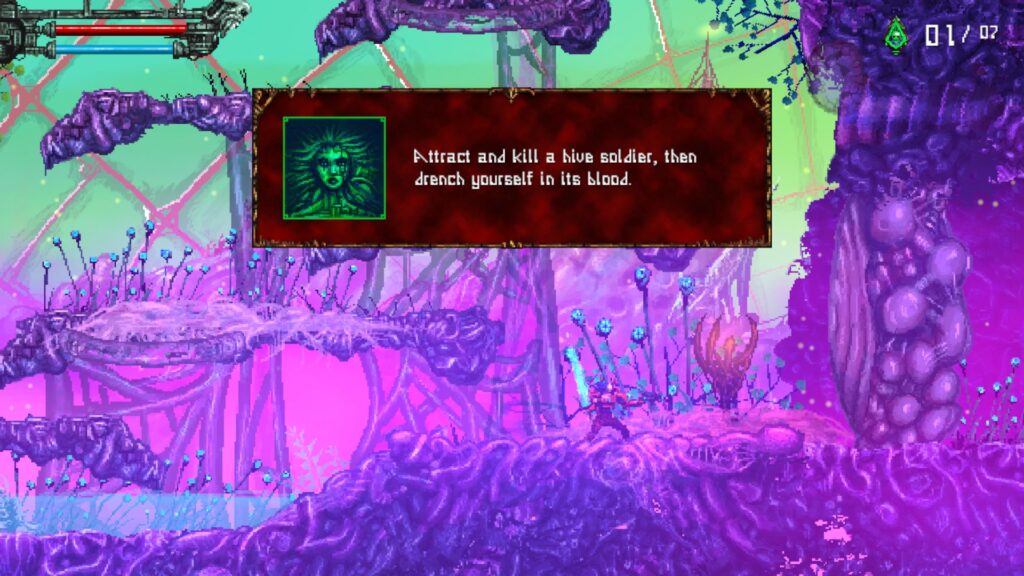
Retro-inspired action-platformers are extremely common in the indie scene, but like Blazing Chrome from earlier this year, Valfaris is most certainly in the category of throwback titles that really understand how to simulate the look and feel of a game from decades past.
Valfaris features some wonderfully detailed pixel art that looks fantastic in motion, and there’s even several CRT video modes to further enhance the retro experience. Many of the environments are dark and grungy, lit only by the glow of your plasma sword and sporadic gunfire.
Enemies tend to explode into nice meaty chunks, and sometimes the remnants of an enemy’s legs will shakily wonder around for a few seconds after your shotgun has brutally disposed of their upper half.
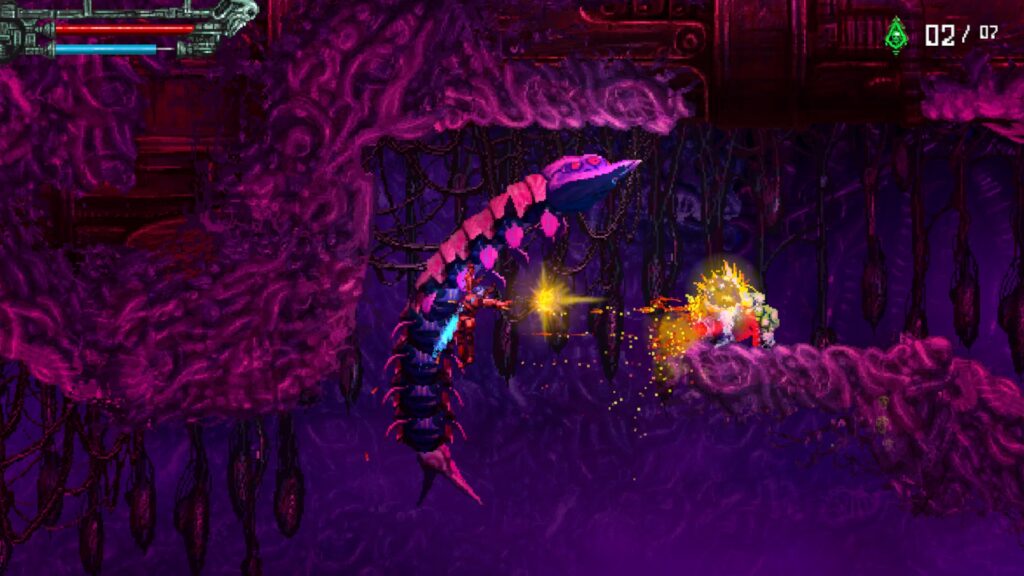
Accompanying the action is an awesome heavy metal soundtrack that blends perfectly with the game’s copious amounts of ultraviolence. The sound assets are equally well done, and help to make even the most basic of plasma pistols feel really powerful and satisfying to use.
That said, sometimes important objects can blend into the backgrounds a little too well. There were a few times where I wasn’t sure where to go next in the game’s otherwise fairly linear levels because I missed a switch I had to shoot, or some vines the game wanted me to climb weren’t obvious at first glance.
Melee combat in Valfaris isn’t the “oh crap” moment of last resort like in many other side-scrolling shooters. Indeed, knowing when to safely hack apart your enemies with a laser sword is a vital component to mastering the game’s brutal and bloody combat.
Melee weapons deal heavy damage, and also generate the precious energy you need to fuel your heavy weapons and shield. Swapping between shooting and slashing is smooth and seamless, and before long you’ll get the hang of charging your foes guns blazing before hacking them to pieces up close and personal.
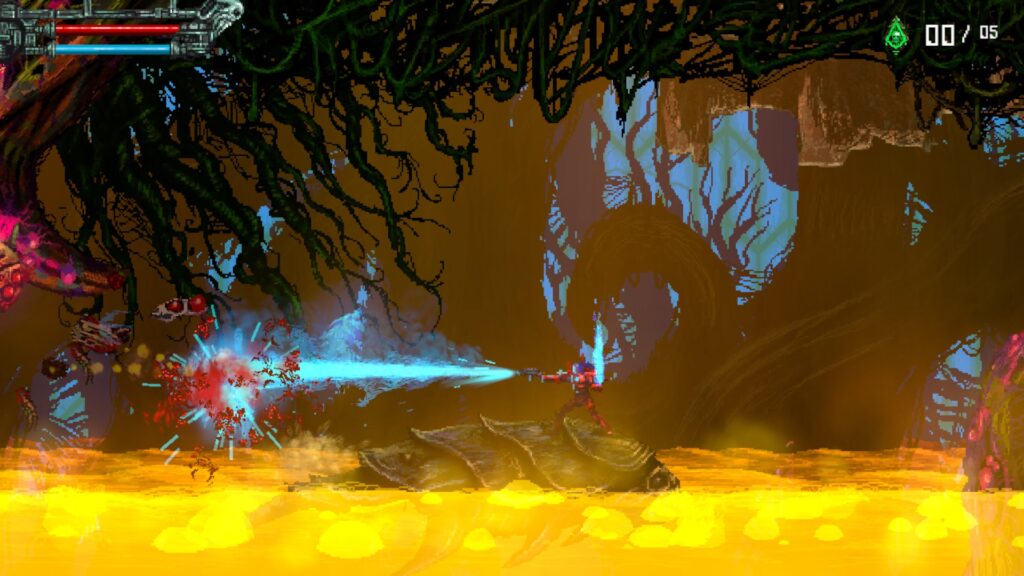
Besides your melee option, you have two other weapon slots in Valfaris. Your sidearm is used in conjunction with your melee weapon, and include things like plasma pistols, submachine guns, and other lighter firearms. These have infinite ammo, and while they typically aren’t as strong as your melee and heavy weapons, they are still no less devastating and satisfying to use.
My personal favorite is the Wolflight, a hand flamer that turns the burning remains of your foes into wolf-shaped bolts of fire that seek out the nearest enemy. The game doesn’t pull any punches when it comes to creating absurd and powerful weapons that can cut through entire hordes of aliens.
Finally, there’s your heavy weapons. These share the energy meter that your shield uses, so there is a bit of a risk and reward involved in using them. Each heavy weapon can deal a steady stream of damage to a boss, or make quick work of lesser enemies, and include things like homing missiles, shotguns, flamethrowers, and miniguns.
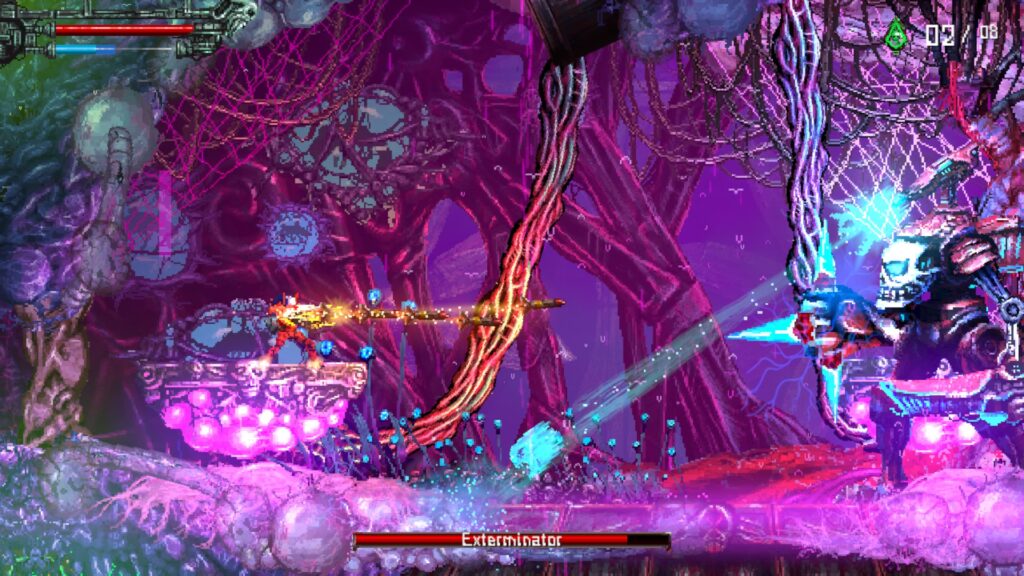
I’ve mentioned a shield mechanic a few times now, but I honestly never found it that useful. You essentially just spend some power from your energy meter to block incoming fire, and if you time it right, you can deflect shots back at the enemy. Problem is, the shield drains energy pretty fast, and the sheer amount of shots coming at you in some battles means that its probably easier to just dodge incoming projectiles.
That’s before you even get into the fairly large number of unblockable attacks used by tougher enemies and bosses. The shield mechanic just feels a little unresponsive and not especially useful. Apparently the devs agree, because there is currently a bug where its not even mapped to the controller when you first start the game.
The game will occasionally break things up with a vehicle sequence, and these are always loads of fun. Rampaging through an exploding factory in a giant mech with flamethrowers, laser cannons, and power fists gives players brief moments of near invulnerability as they decimate lowly foot soldiers and combat drones. These segments are usually quick power fantasies that serve their purpose to spice up the gameplay without overstaying their welcome to the point of becoming dull.
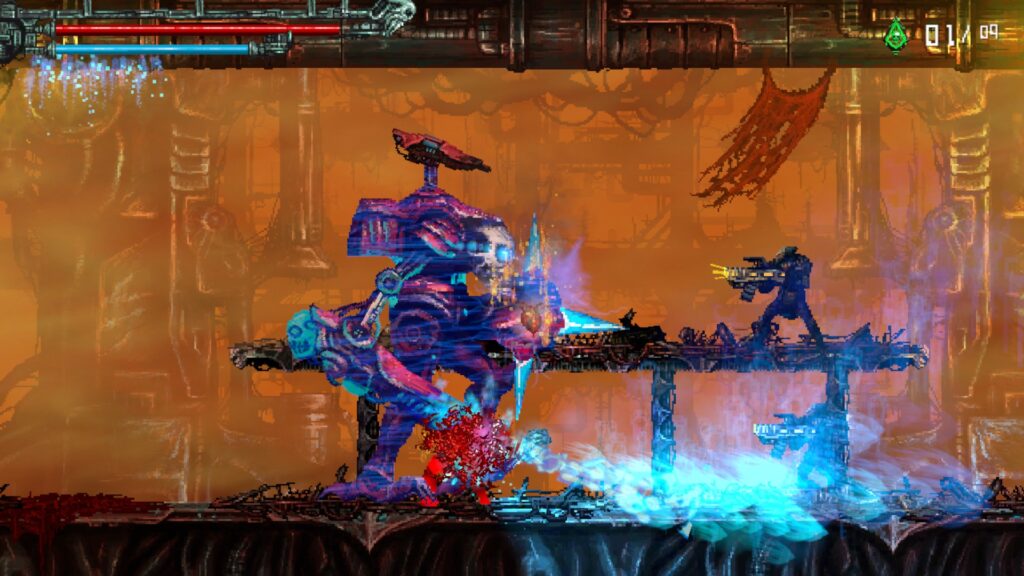
While most of Valfaris consists of shooting and slashing your way through hordes of enemies in moderately linear levels, there is some exploration to be had. Each level features hidden rooms that contain Blood Metal, the game’s upgrade currency, or Resurrection Icons, which are used to activate checkpoints. Some of the game’s weapons are also in these hidden areas, so it is possible to miss a few of them if you aren’t paying attention.
The game’s upgrade system is fairly bland. Its as basic as each weapon having four levels of upgrades, and each level simply makes the weapon slightly more powerful, or extends its range a bit.
The upgrades don’t feel that significant or exciting, but luckily the game’s weapons are so powerful and awesome on their own that the laziness of the upgrade system doesn’t really get in the way of your fun.
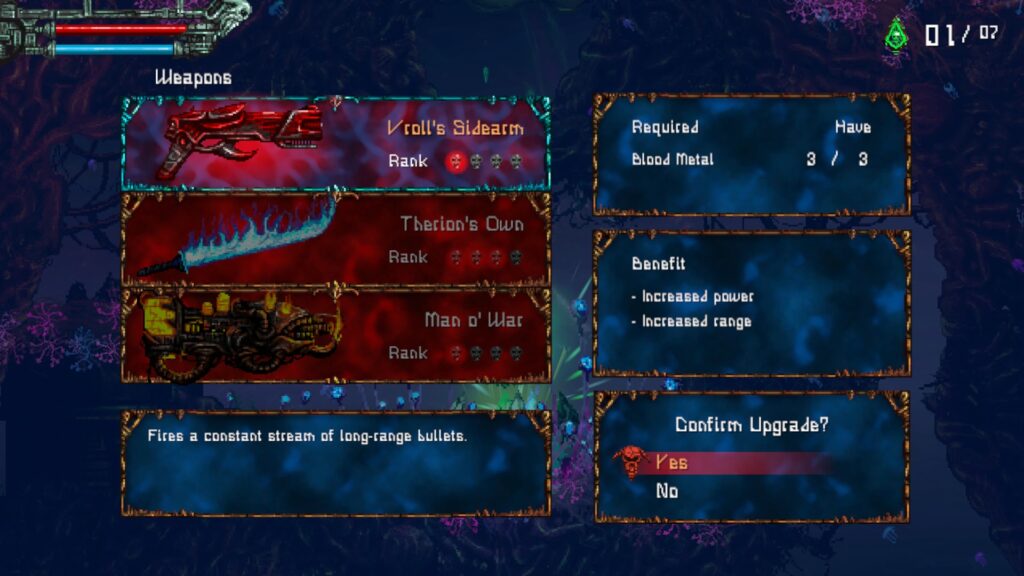
The Resurrection Icons play into the game’s rather interesting take on checkpoints. Valfaris has fairly frequent checkpoints, but if you want to challenge yourself, you can opt not to use them and hold on to your Resurrection Icons. You get a small health and energy boost for each Icon, and the game gradually increases the max number of them you can have at once.
This creates a system where you can trade a scaling boost in survivability and power at the expense of losing more progress should you die. There’s also a few machines scattered throughout the game that can convert Resurrection Icons into Blood Metal.
Outside of this system though, Valfaris doesn’t feature any sort of difficulty customization. There’s only one setting, with no harder or easier modes to choose from. I don’t play games like this too often, and I personally found Valfaris to sit in that sweet spot where its challenging without being too frustrating.
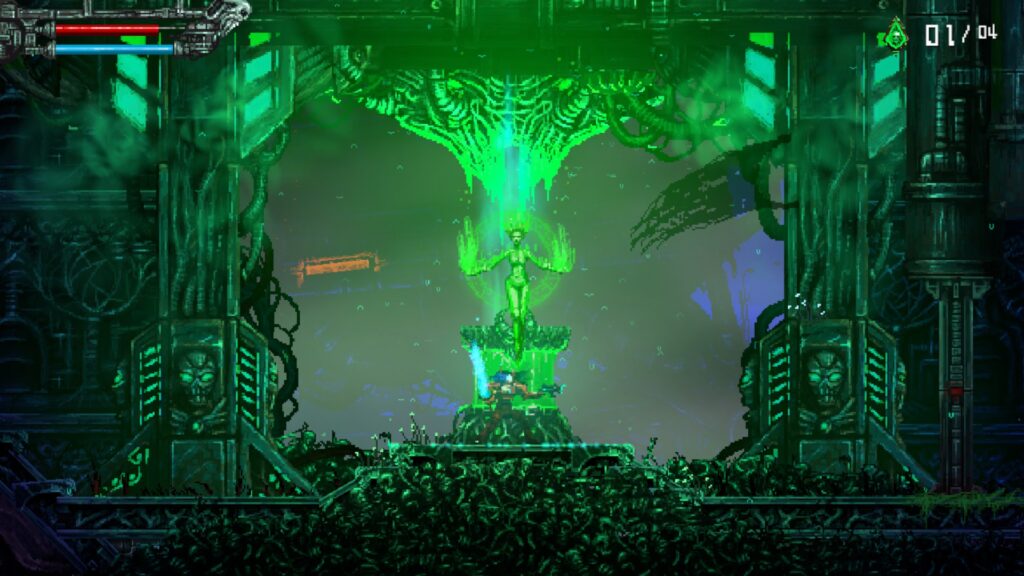
Well, at least that’s the case most of the time. Valfaris does occasionally rely on annoying trial and error mechanics. The most common examples of this are a handful of areas with infinitely respawning enemies that you have to slog through, and sometimes this involves enemies spawning right on top of you before you have a chance to react.
The other example of the game’s more annoying difficulty tricks are bosses with instant kill attacks that they unleash with their final breath. More often than not this includes some sort of self destruction explosion, and if you happened to kill them with a melee attack, then be prepared to have to do the fight all over again. Not every boss has a death rattle, but enough do that you’ll always need to stay on your toes and try to remember to keep your distance when finishing a boss off.
Valfaris will probably take most gamers around six to seven hours to complete, and aside from going back to search for secrets, there really isn’t any replay value unless you just enjoy the core gameplay. On the bright side, the developers have already mentioned that a New Game+ is in development.
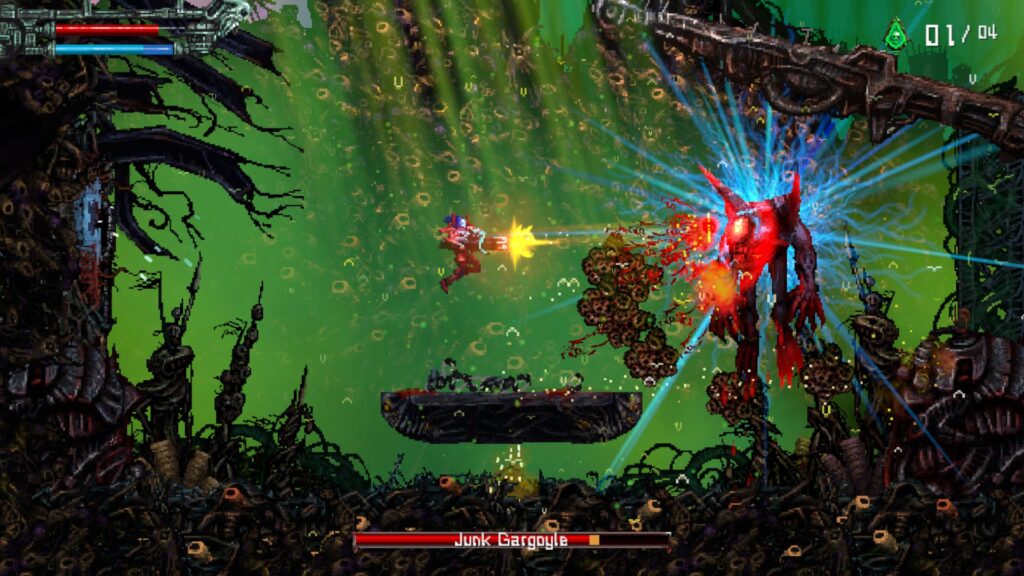
Aside from some nitpicks here and there, Valfaris is a fantastic example of a retro-inspired side scroller done right. Its highly detailed pixel art looks great, its heavy metal soundtrack is awesome, and it provides gamers with a wonderfully bloody and challenging power fantasy full of grimdark ’80s flair.
It nails the aesthetic and gameplay of Genesis era side scrollers, and looks like something that could have been released during that era and go down in history as a fondly remembered classic. Even if you’re sick of retro-inspired action-platformers, you should still consider giving Valfaris a shot.
Valfaris was reviewed on Windows PC using a review copy provided by Big Sugar. You can find additional information about Niche Gamer’s review/ethics policy here.